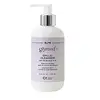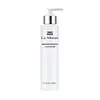What's inside
What's inside
 Key Ingredients
Key Ingredients

 Benefits
Benefits

 Concerns
Concerns

 Ingredients Side-by-side
Ingredients Side-by-side

Anthemis Nobilis Flower Extract
MaskingCamellia Sinensis Leaf Extract
AntimicrobialCaprylyl Glycol
EmollientCocamidopropyl Betaine
CleansingDecyl Glucoside
CleansingEthylhexylglycerin
Skin ConditioningGlycerin
HumectantHexylene Glycol
EmulsifyingMandelic Acid
AntimicrobialPanthenol
Skin ConditioningPentylene Glycol
Skin ConditioningPhenoxyethanol
PreservativePropanediol
SolventSymphytum Officinale Rhizome/Root Extract
Skin ConditioningTocopherol
AntioxidantSodium C14-16 Olefin Sulfonate
CleansingPEG-18 Glyceryl Oleate/Cocoate
EmulsifyingPEG-120 Methyl Glucose Dioleate
EmulsifyingAnthemis Nobilis Flower Extract, Camellia Sinensis Leaf Extract, Caprylyl Glycol, Cocamidopropyl Betaine, Decyl Glucoside, Ethylhexylglycerin, Glycerin, Hexylene Glycol, Mandelic Acid, Panthenol, Pentylene Glycol, Phenoxyethanol, Propanediol, Symphytum Officinale Rhizome/Root Extract, Tocopherol, Sodium C14-16 Olefin Sulfonate, PEG-18 Glyceryl Oleate/Cocoate, PEG-120 Methyl Glucose Dioleate
Citrus Aurantium Dulcis Fruit Water
MaskingPyrus Malus Fruit Water
MaskingDecyl Glucoside
CleansingCocamidopropyl Betaine
CleansingSodium Lauroyl Oat Amino Acids
CleansingSodium C14-16 Olefin Sulfonate
CleansingMethyl Gluceth-20
HumectantGlycerin
HumectantXanthan Gum
EmulsifyingRumex Occidentalis Extract
Skin ConditioningPlankton Extract
Skin ConditioningGlycyrrhiza Glabra Root Extract
BleachingHydrogenated Lecithin
EmulsifyingOligopeptide-68
BleachingMandelic Acid
AntimicrobialCitrus Unshiu Peel Extract
MaskingCarica Papaya Fruit Extract
Skin ConditioningGlutathione
Camellia Sinensis Leaf Extract
AntimicrobialArctostaphylos Uva-Ursi Leaf Extract
Skin ConditioningVitis Vinifera Seed Extract
Antimicrobial3-O-Ethyl Ascorbic Acid
Skin ConditioningTranexamic Acid
AstringentPropanediol
SolventCitrus Grandis Fruit Extract
AstringentCitrus Sinensis Peel Oil Expressed
PerfumingLavandula Angustifolia Oil
MaskingCitrus Aurantium Bergamia Fruit Oil
MaskingCitrus Aurantium Flower Oil
PerfumingPentylene Glycol
Skin ConditioningCaprylyl Glycol
EmollientEthylhexylglycerin
Skin ConditioningCitrus Aurantium Dulcis Fruit Water, Pyrus Malus Fruit Water, Decyl Glucoside, Cocamidopropyl Betaine, Sodium Lauroyl Oat Amino Acids, Sodium C14-16 Olefin Sulfonate, Methyl Gluceth-20, Glycerin, Xanthan Gum, Rumex Occidentalis Extract, Plankton Extract, Glycyrrhiza Glabra Root Extract, Hydrogenated Lecithin, Oligopeptide-68, Mandelic Acid, Citrus Unshiu Peel Extract, Carica Papaya Fruit Extract, Glutathione, Camellia Sinensis Leaf Extract, Arctostaphylos Uva-Ursi Leaf Extract, Vitis Vinifera Seed Extract, 3-O-Ethyl Ascorbic Acid, Tranexamic Acid, Propanediol, Citrus Grandis Fruit Extract, Citrus Sinensis Peel Oil Expressed, Lavandula Angustifolia Oil, Citrus Aurantium Bergamia Fruit Oil, Citrus Aurantium Flower Oil, Pentylene Glycol, Caprylyl Glycol, Ethylhexylglycerin
Ingredients Explained
These ingredients are found in both products.
Ingredients higher up in an ingredient list are typically present in a larger amount.
Camellia Sinensis Leaf Extract is derived from the leaves of the tea plant. Black tea, green tea, and oolong tea are all harvested from this plant.
This ingredient has many skin benefits:
This ingredient contains polyphenols, a strong antioxidant. Antioxidants help fight off molecules that damage skin cells.
On top of that, the antioxidants in green tea neutralize free-radicals from the sun. This gives the skin some extra UV protection, but should not replace sunscreen.
Many components of tea have anti-inflammatory properties.
Polyphenols and L-theanine help soothe the skin and reduce irritation. The caffeine in Camellia Sinensis Leaf Extract helps calm inflamed blood vessels.
Other compounds found in tea include: Vitamin Bs, linoleic acid, magnesium, calcium, iron, and zinc.
Research has shown both drinking Camellia Sinensis Leaf Tea and applying it to the skin can help boost skin elasticity and hydration. Studies also show using tea extract may reduce sebum, or oil, production.
Learn more about Camellia Sinensis Leaf ExtractCaprylyl Glycol is a humectant and emollient, meaning it attracts and preserves moisture.
It is a common ingredient in many products, especially those designed to hydrate skin. The primary benefits are retaining moisture, skin softening, and promoting a healthy skin barrier.
Though Caprylyl Glycol is an alcohol derived from fatty acids, it is not the kind that can dry out skin.
This ingredient is also used as a preservative to extend the life of products. It has slight antimicrobial properties.
Learn more about Caprylyl GlycolCocamidopropyl Betaine is a fatty acid created by mixing similar compounds in coconut oil and dimethylaminopropylamine, a compound with two amino groups.
This ingredient is a surfactant and cleanser. It helps gather the dirt, pollutants, and other impurities in your skin to be washed away. It also helps thicken a product and make the texture more creamy.
Being created from coconut oil means Cocamidopropyl Betaine is hydrating for the skin.
While Cocamidopropyl Betaine was believed to be an allergen, a study from 2012 disproved this. It found two compounds in unpure Cocamidopropyl Betaine to be the irritants: aminoamide and 3-dimethylaminopropylamine. High-grade and pure Cocamidopropyl Betaine did not induce allergic reactions during this study.
Learn more about Cocamidopropyl BetaineDecyl Glucoside is a glucose-based surfactant and emulsion stabilizer. It is created by reacting glucose with the fatty acids from plants.
Surfactants help clean the skin by trapping oil, sebum, and dirt to be washed away. As an emulsion stabilizer, it stabilizes the ingredients in a product by preventing them from separating.
This ingredient is biodegradable and non-toxic. This ingredient is commonly found in baby shampoos.
Decyl Glucoside is sometimes used to stabilize the UV filter Tinosorb.
Learn more about Decyl GlucosideEthylhexylglycerin (we can't pronounce this either) is commonly used as a preservative and skin softener. It is derived from glyceryl.
You might see Ethylhexylglycerin often paired with other preservatives such as phenoxyethanol. Ethylhexylglycerin has been found to increase the effectiveness of these other preservatives.
Glycerin is already naturally found in your skin. It helps moisturize and protect your skin.
A study from 2016 found glycerin to be more effective as a humectant than AHAs and hyaluronic acid.
As a humectant, it helps the skin stay hydrated by pulling moisture to your skin. The low molecular weight of glycerin allows it to pull moisture into the deeper layers of your skin.
Hydrated skin improves your skin barrier; Your skin barrier helps protect against irritants and bacteria.
Glycerin has also been found to have antimicrobial and antiviral properties. Due to these properties, glycerin is often used in wound and burn treatments.
In cosmetics, glycerin is usually derived from plants such as soybean or palm. However, it can also be sourced from animals, such as tallow or animal fat.
This ingredient is organic, colorless, odorless, and non-toxic.
Glycerin is the name for this ingredient in American English. British English uses Glycerol/Glycerine.
Learn more about GlycerinMandelic Acid is an alpha hydroxy acid (AHA).
Like other AHAs, it helps exfoliate the surface of the skin by breaking down the bonds that hold dead skin cells together. This helps reveal smoother and brighter skin underneath.
Mandelic acid helps with:
Due to it having a larger molecular size than glycolic acid, mandelic acid is able to penetrate the skin more slowly and evenly. This makes it gentler and less irritating, making it a great option for sensitive or beginner skin.
Despite being milder, mandelic acid is still an effective exfoliant that improves skin texture and tone over time.
What makes mandelic acid stand out from other AHAs? It has antibacterial and antioxidant properties.
These traits make it a great option for acne-prone or problem skin by reducing active breakouts and fading post-acne marks. Studies show that mandelic acid (especially when combined with salicylic acid) can significantly reduce pimples and hyperpigmentation while causing fewer side effects than stronger acids.
Mandelic acid is effective in concentrations of 5% and up with an ideal pH range of 3-4 for at-home use.
Like other AHAs, it’s important to wear sunscreen daily to protect your newly exfoliated skin.
However, unlike glycolic acid, mandelic acid is light-sensitive. Be sure your mandelic acid is packaged in opaque containers to ensure it stays stable and effective.
In short, mandelic acid is a gentle yet powerful AHA that exfoliates, brightens, and helps clarify skin while keeping irritation low. Its antibacterial action makes it especially beneficial for those with acne-prone, sensitive, or uneven skin, offering smoother, clearer, and more even-toned results over time.
Read more about some other popular AHA's here:
Learn more about Mandelic AcidPentylene glycol is typically used within a product to thicken it. It also adds a smooth, soft, and moisturizing feel to the product. It is naturally found in plants such as sugar beets.
The hydrophilic trait of Pentylene Glycol makes it a humectant. As a humectant, Pentylene Glycol helps draw moisture from the air to your skin. This can help keep your skin hydrated.
This property also makes Pentylene Glycol a great texture enhancer. It can also help thicken or stabilize a product.
Pentylene Glycol also acts as a mild preservative and helps to keep a product microbe-free.
Some people may experience mild eye and skin irritation from Pentylene Glycol. We always recommend speaking with a professional about using this ingredient in your routine.
Pentylene Glycol has a low molecular weight and is part of the 1,2-glycol family.
Learn more about Pentylene GlycolPropanediol is an all-star ingredient. It softens, hydrates, and smooths the skin.
It’s often used to:
Propanediol is not likely to cause sensitivity and considered safe to use. It is derived from corn or petroleum with a clear color and no scent.
Learn more about PropanediolSodium C14-16 Olefin Sulfonate is a cleansing agent made from a mixture of long chain sulfonate salts. It can also help produce foam.
This ingredient may be drying. We recommend speaking with a professional if you have concerns.